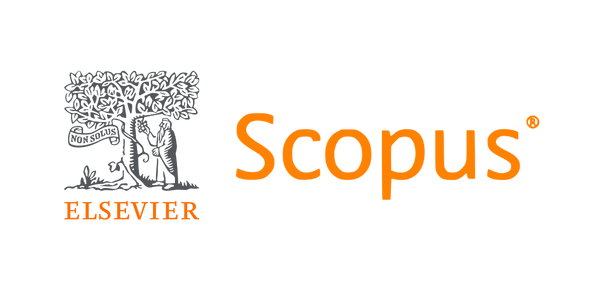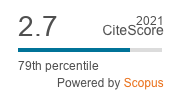Hybrid Quantum–Cloud Framework for Nonlinear Clustering Optimization and Intelligent Resource Management
Keywords:
Hybrid QuantumCloud computing, Nonlinear Clustering Optimization, Intelligent Resource Management, Quantum Approximate Optimization Algorithm (QAOA), Reinforcement Learning, Cloud Orchestration, Quantum-inspired machine learning, Scalable workload. Scheduling; Energy-Efficient Computing; Next-Generation Cloud EcosystemsAbstract
This paper proposes a hybrid quantum-cloud computing architecture, which ought to be applied to overcome the two problems of nonlinear clustering optimization and intelligent management of large-scale resources in the heterogeneous environments. The current cloud workloads in terms of complexity, scalability, and energy needs are not always easily met by the conventional machine learning and heuristic scheduling processes, particularly in cases where the data possess nonlinear structures. These weaknesses will be mitigated by the proposed framework that will integrate quantum-inspired algorithms (which will operate on variational quantum circuits and Quantum Approximate Optimization Algorithm (QAOA)) with cloud-native orchestration solutions, only that reinforcement learning-based scheduling will be integrated. This architecture has its quantum layer where nonlinear clustering is done to achieve more accurate workload partitioning, and cloud layer sharing resources and balancing throughput, latency, and energy efficiency. It is a broker interface that provides a fluent communication between quantum processors and cloud infrastructure that makes it possible to make real time decisions. The synthetic nonlinear clustering, IoT workloads and big data traces benchmark datasets were experimentally simulated on CloudSim and Kubernetes. Results indicate that the framework can lead to a significant performance increase as compared to conventional approaches and that the accuracy of the clustering process has been enhanced by 12-18, average job latency has been reduced by 22 and resource utilization efficiency has been improved by 25. Additionally, the hybrid approach is very scalable and stable as the degree of workload varies and is able to support quality-of-service (QoS) even during the peak period of workload. In these studies, the findings show the possibility of quantum and cloud computing hybridization to the next generation of intelligent cloud eco-systems to give a pathway to green, flexible, and high-performance computing in the current areas, 6G networks, smart cities, bioinformatics, and smart financial analytics.
References
Farhi, E., Goldstone, J., & Gutmann, S. (2014). A quantum approximate optimization algorithm. arXiv preprint arXiv:1411.4028.
Grover, L. K. (1996). A fast quantum mechanical algorithm for database search. In Proceedings of the 28th Annual ACM Symposium on Theory of Computing (pp. 212–219).
Kadowaki, T., & Nishimori, H. (1998). Quantum annealing in the transverse Ising model. Physical Review E, 58(5), 5355–5363.
Liu, X. (2025). Quantum-inspired algorithms for signal processing in next-gen wireless sensors. Electronics, Communications, and Computing Summit, 3(1), 71–79.
Schuld, M., & Killoran, N. (2019). Quantum machine learning in feature Hilbert spaces. Physical Review Letters, 122(4), 040504.
Buyya, R., Ranjan, R., & Calheiros, R. (2009). Modeling and simulation of scalable cloud computing environments and the CloudSim toolkit: Challenges and opportunities. In 2009 International Conference on High Performance Computing & Simulation (pp. 1–11). IEEE.
Li, K., Xu, G., Zhao, G., Dong, Y., & Wang, D. (2014). Cloud task scheduling based on load balancing ant colony optimization. In 2014 IEEE Sixth International Conference on Computer Science and Information Technology (pp. 214–219). IEEE.
Mao, H., Alizadeh, M., Menache, I., & Kandula, S. (2016). Resource management with deep reinforcement learning. In Proceedings of the 15th ACM Workshop on Hot Topics in Networks (pp. 50–56). ACM.
Maria, E., Sofia, K., & Georgios, K. (2025). Reliable data delivery in large-scale IoT networks using hybrid routing protocols. Journal of Wireless Sensor Networks and IoT, 2(1), 69–75.
Pallavi, C. H., & Sreenivasulu, G. (2024). A hybrid optical-acoustic modem based on MIMO-OFDM for reliable data transmission in green underwater wireless communication. Journal of VLSI Circuits and Systems, 6(1), 36–42. https://doi.org/10.31838/jvcs/06.01.06
IBM Quantum. (2023). Qiskit Runtime: Hybrid quantum-classical computing service. Retrieved from https://qiskit.org/
Borhan, M. N. (2025). Exploring smart technologies towards applications across industries. Innovative Reviews in Engineering and Science, 2(2), 9-16. https://doi.org/10.31838/INES/02.02.02
Dunjko, V., & Briegel, H. J. (2018). Machine learning & artificial intelligence in the quantum domain: A review of recent progress. Reports on Progress in Physics, 81(7), 074001.
Reginald, P. J. (2025). Wavelet-based denoising and classification of ECG signals using hybrid LSTM-CNN models. National Journal of Signal and Image Processing, 1(1), 9–17.
Poornimadarshini, S. (2025). Robust audio signal enhancement using hybrid spectral-temporal deep learning models in noisy environments. National Journal of Speech and Audio Processing, 1(1), 30–36.
Preskill, J. (2018). Quantum computing in the NISQ era and beyond. Quantum, 2, 79.
Nour, A. A., Mehbodniya, A., Webber, J. L., Bostani, A., Shah, B., Beknazarov, Z. E.,& Karupusamy, S. (2023). Optimizing intrusion detection in industrial cyber-physical systems through transfer learning approaches. Computers and Electrical Engineering, 111(Part A), 108929. https://doi.org/10.1016/j.compeleceng.2023.108929
Venkatesh Muniyandi. (2024). AI-Powered Document Processing with Azure Form Recognizer and Cognitive Search. Journal of Computational Analysis and Applications (JoCAAA), 33(05), 1884–1902.
Muniyandi, Venkatesh, Pradeep Kumar Muthukamatchi, and Prashanthi Matam. “Scalable Microservices Architecture Using Azure Kubernetes Service (AKS).” 2025 International Conference on Computing Technologies & Data Communication (ICCTDC). IEEE, 2025.
Kavitha, M. (2025). Real-time speech enhancement on edge devices using optimized deep learning models. National Journal of Speech and Audio Processing, 1(1), 1–7.
R. Chellu, “Integrating Google Cloud Identity and Access Management (IAM) with Managed File Transfer for Data Protection,” 2025 International Conference on Computing Technologies (ICOCT), Bengaluru, India, 2025, pp. 1-8, doi: 10.1109/ICOCT64433.2025.11118469.
Downloads
Published
How to Cite
Issue
Section
License
Copyright (c) 2025 Results in Nonlinear Analysis

This work is licensed under a Creative Commons Attribution 4.0 International License.



